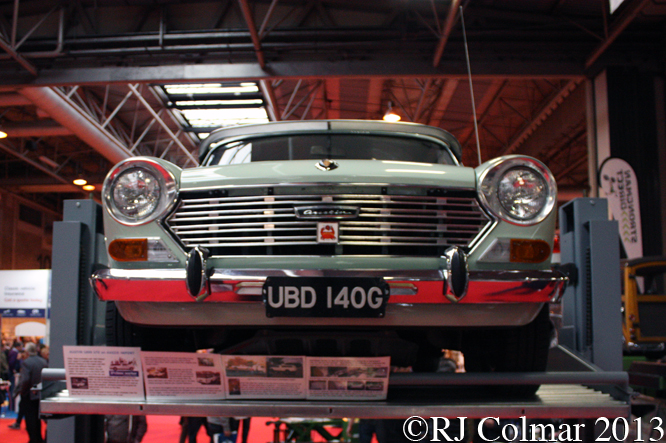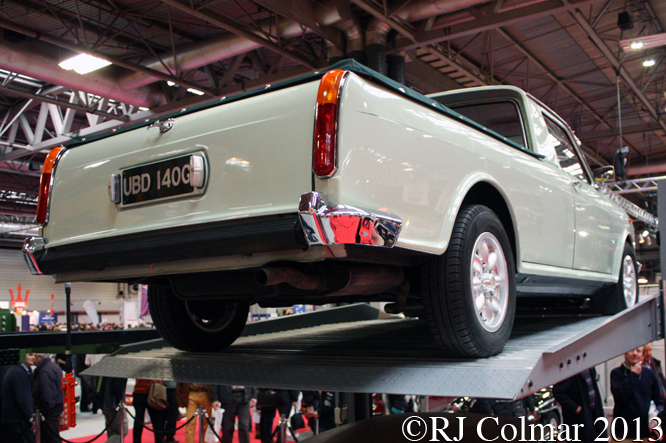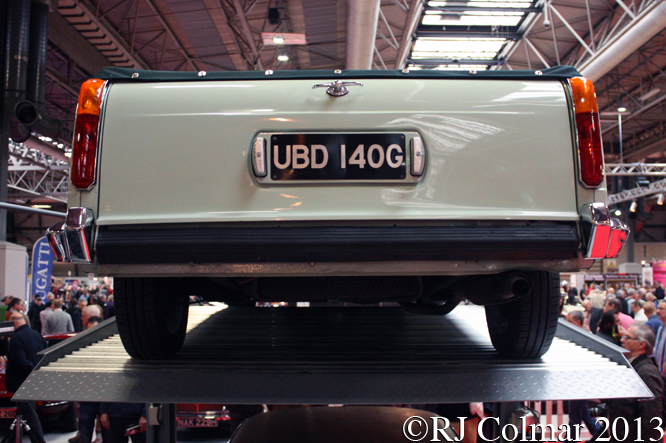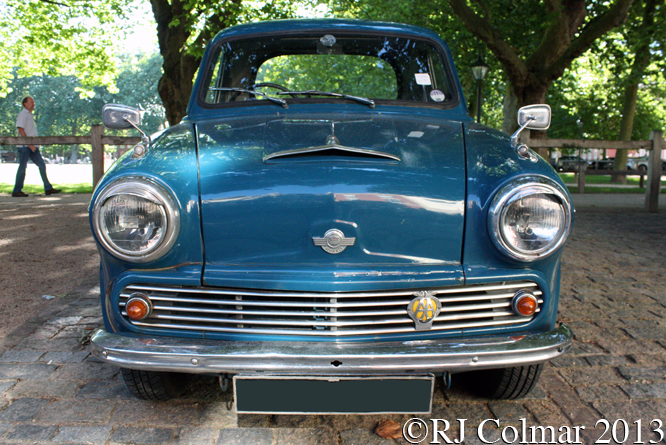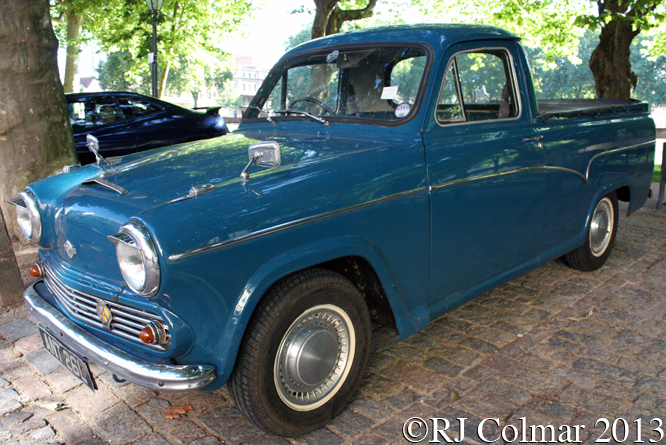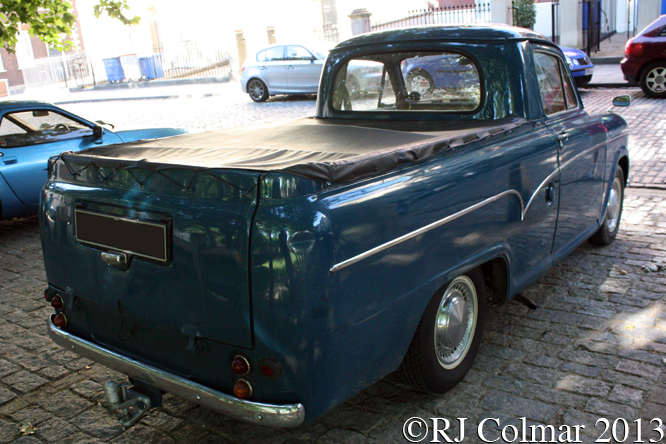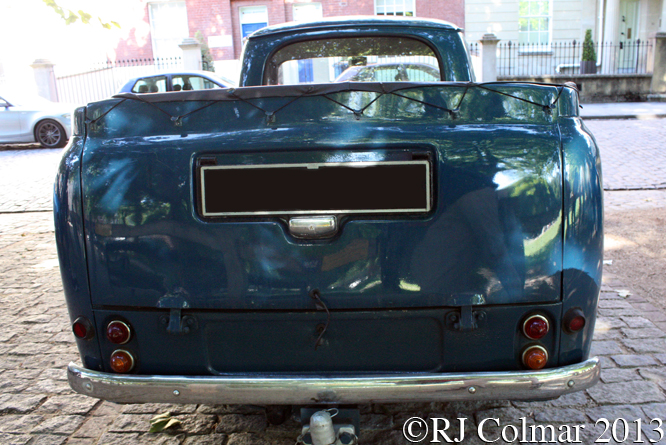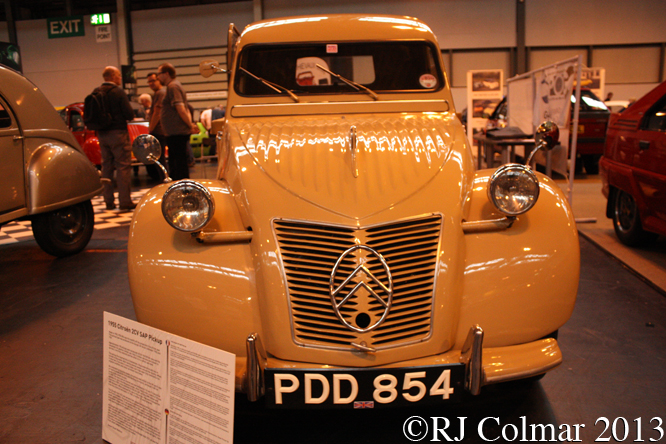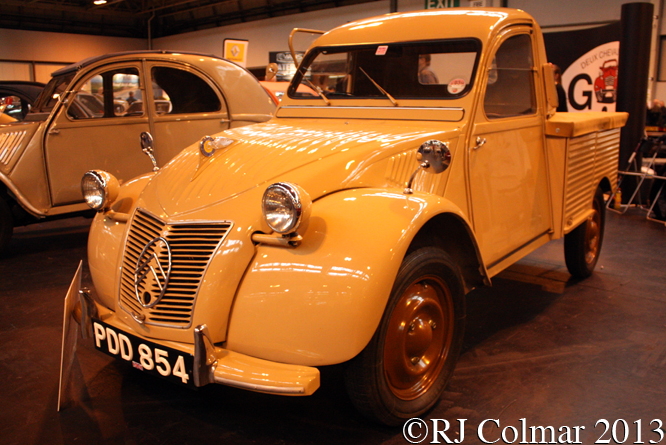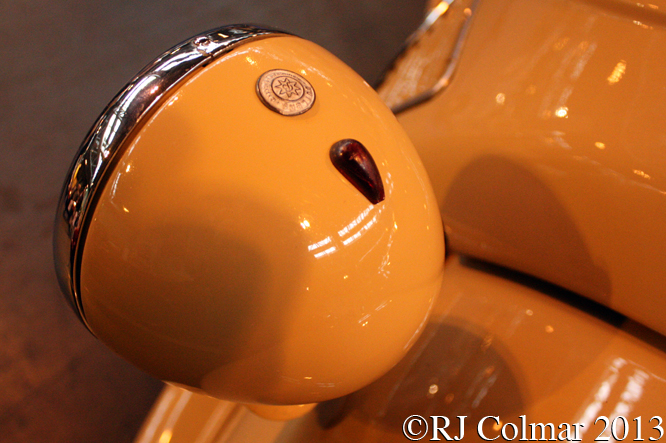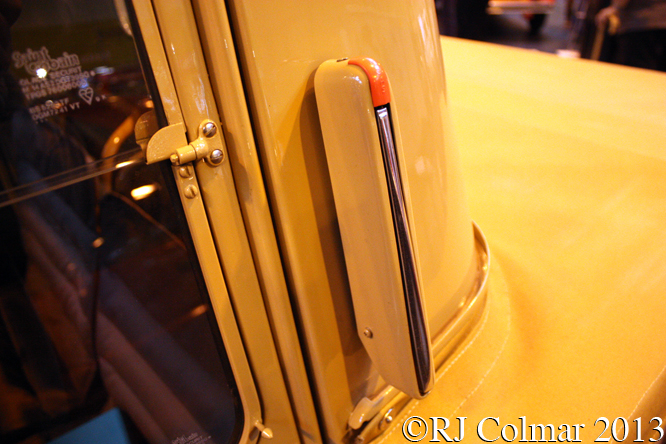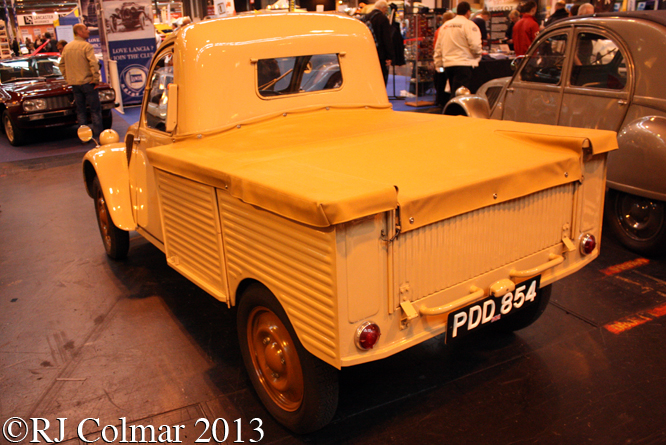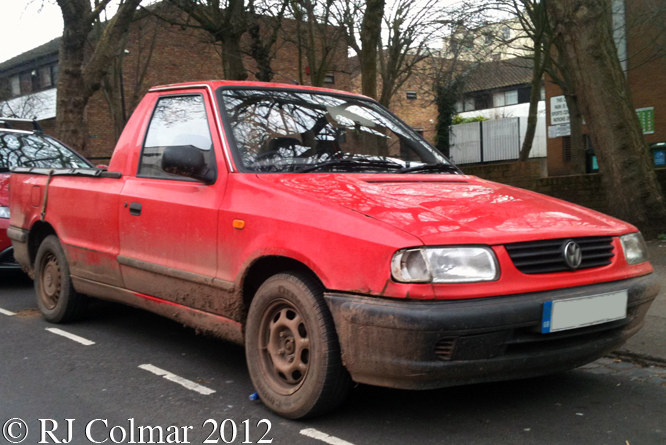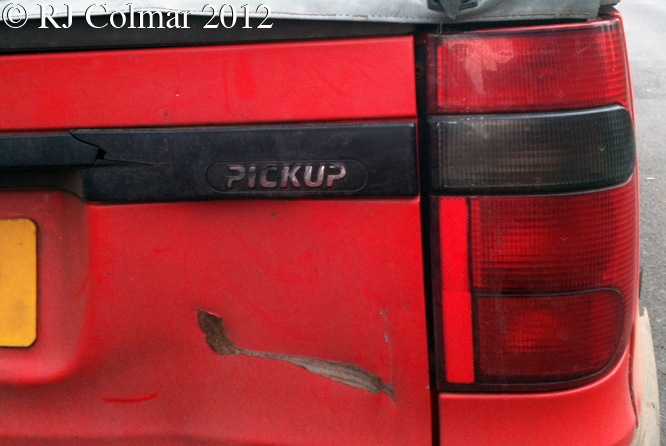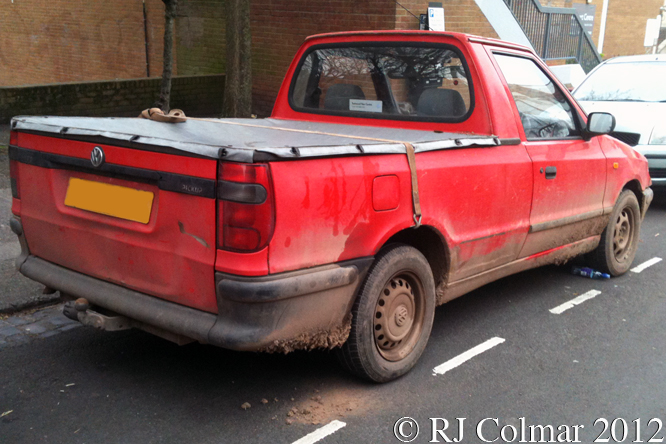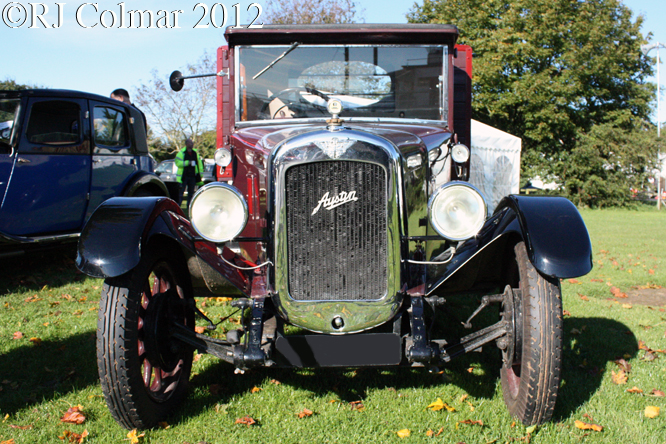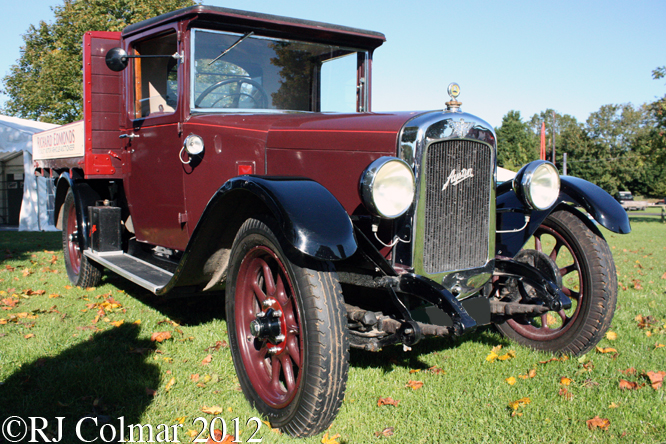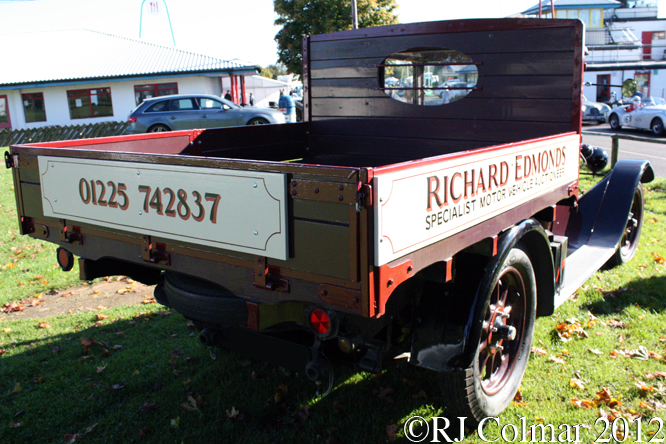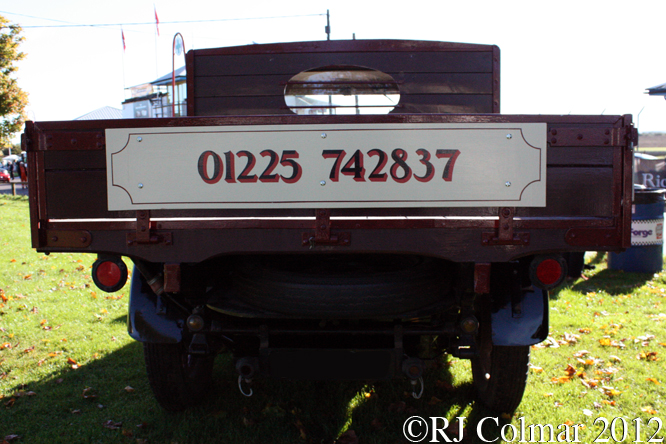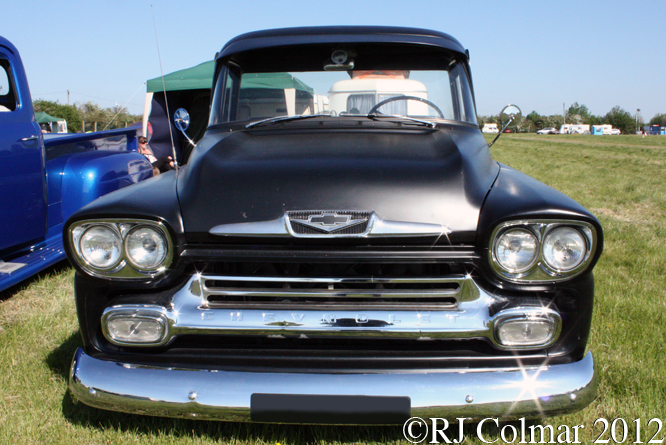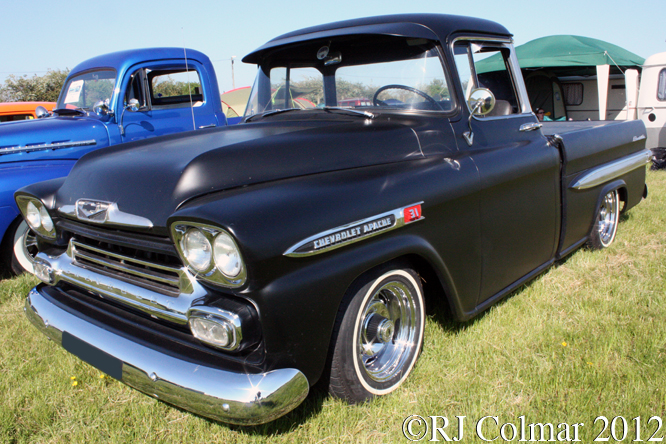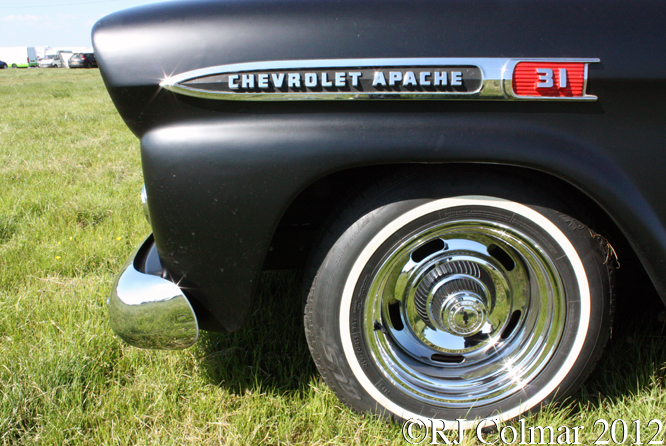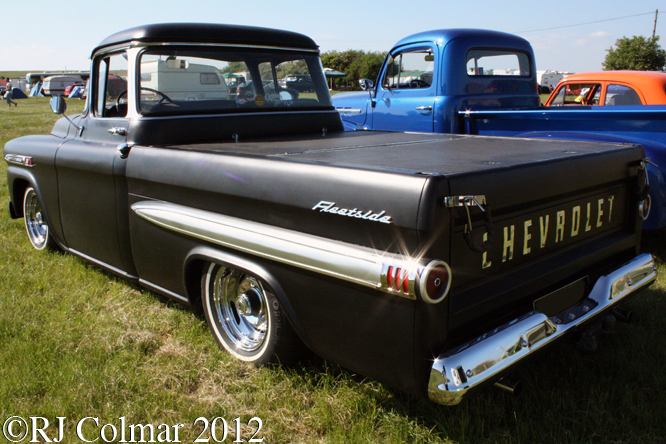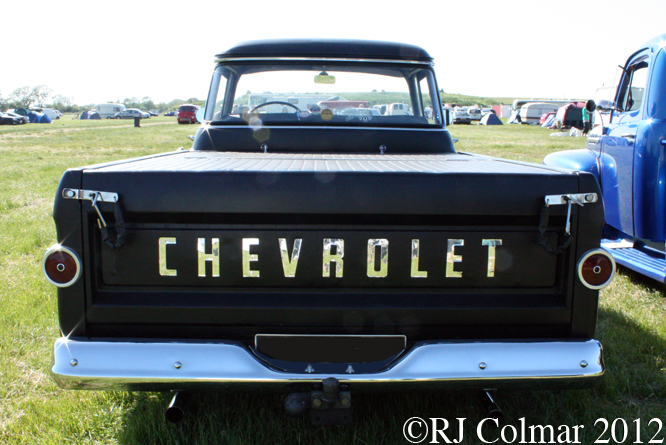Unlike it’s earlier siblings, which had been based on the full size Ford Custom range, the second generation Ford Ranchero was based on the mid size Ford Falcon range and launched in 1960.
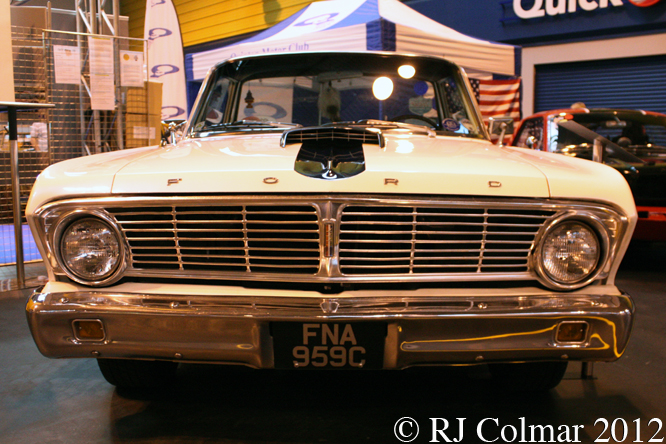
In 1964 like it’s parent Falcon the Ranchero received a face lift with the 4.7 litre / 289 cui Windsor V8 replacing the 4.3 litre / 260 cui variant in the top performance models.
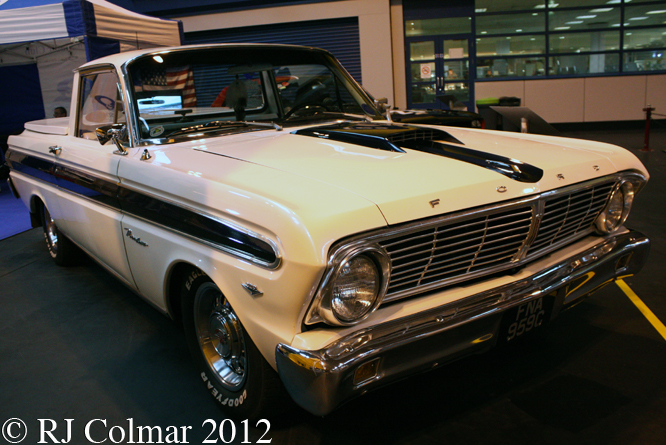
Note that while the ’64 Falcon was known as second generation, the ’60 to ’65 model Ranchero’s inclusive are known as second generation Ranchero’s.
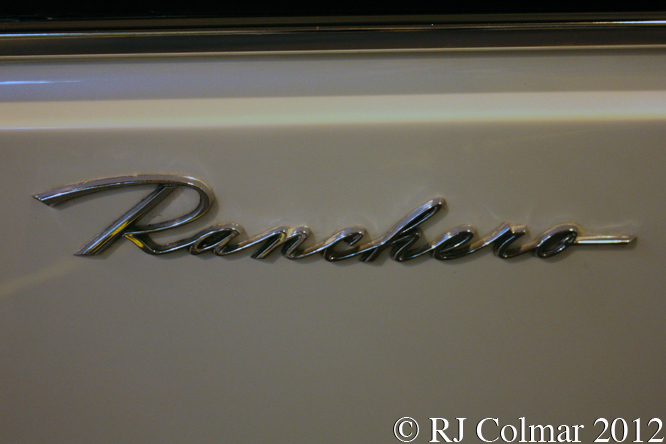
Toady’s featured vehicle powered by a “289” was built in 1965, but appears not to have been imported into the UK until 2009.
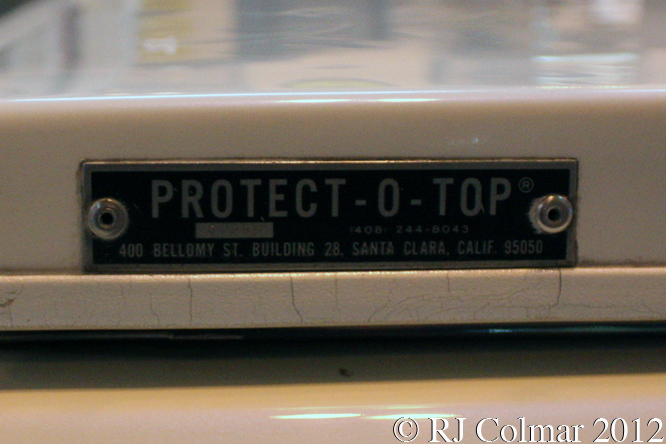
The rear deck is covered by an aftermarket Protect-O-Top made of fibre glass with spring loaded hinges made in Santa Clara CA, Protect-O-Top appears to have gone out of business after the owner failed to attract a buyer some years ago.
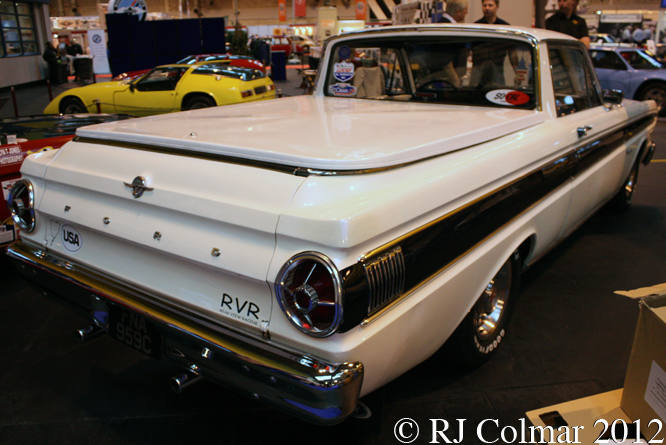
In 2011 a ’65 Ranchero owner managed to trace two former Protect-O-Top employees who had access to the original moulds. They were persuaded to make up some new Ranchero Protect-O-Tops for between $650 and $900 each. The cost of shipping these items doubled the cost, because they could only be carried at commercial rates due to their “66 x 60” unpacked size.
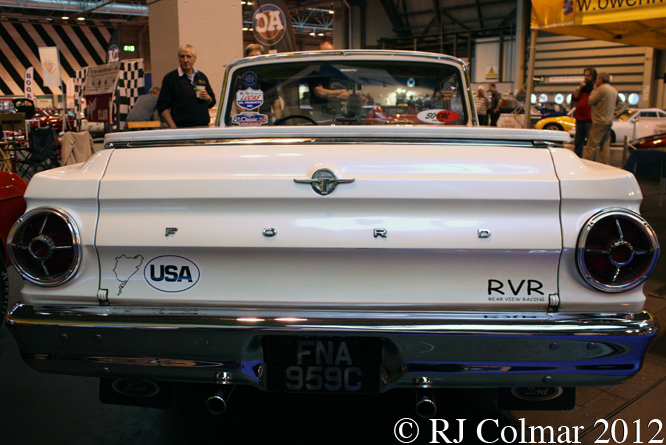
With a larger payload than the VW Type 2 pickup, against which the Ranchero was designed to compete, the model did well, unlike it’s parent Falcon which could not hold it’s own against the new Ford Mustang pony car.
Thanks for joining me on this “Protoect-O-Top” edition of “Gettin’ a li’l psycho on tyres” I hope you will join me again tomorrow. Don’t forget to come back now !
Brighton Speed Trials Under Threat of Permanent Cancellation !
In their infinite wisdom, Brighton & Hove City Council are seeking to ban the Brighton Speed Trials from 2014.
If you care about speed and or motorsport history, please sign this linked petition to save Brighton Speed Trials in 2014 and beyond.
It’s a faf to Register before signing, but relatively painless compared to loosing the event which has been run with few interruptions since 1905.
You do not need to be resident in Brighton or even the UK to sign.
More on Brighton Speed Trials on this link.
Thanks and please spread the word through whatever social media you have at your disposal.


